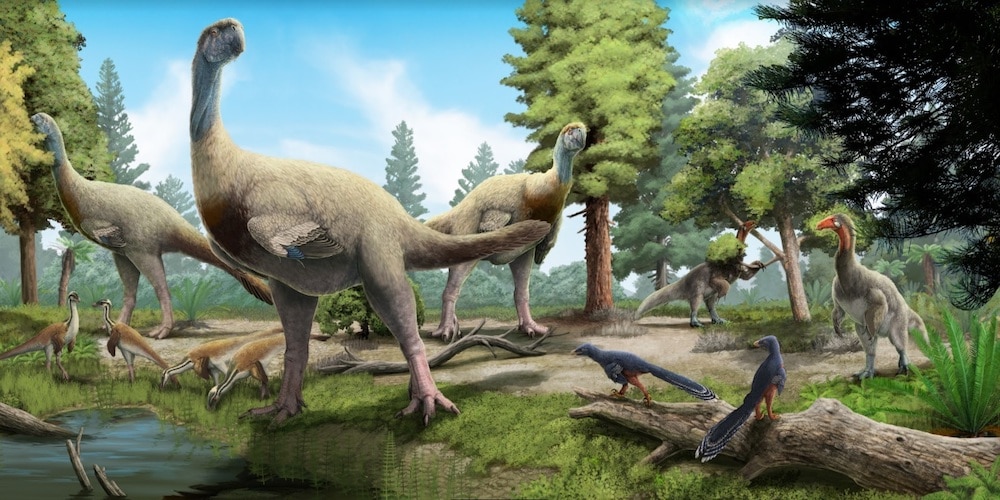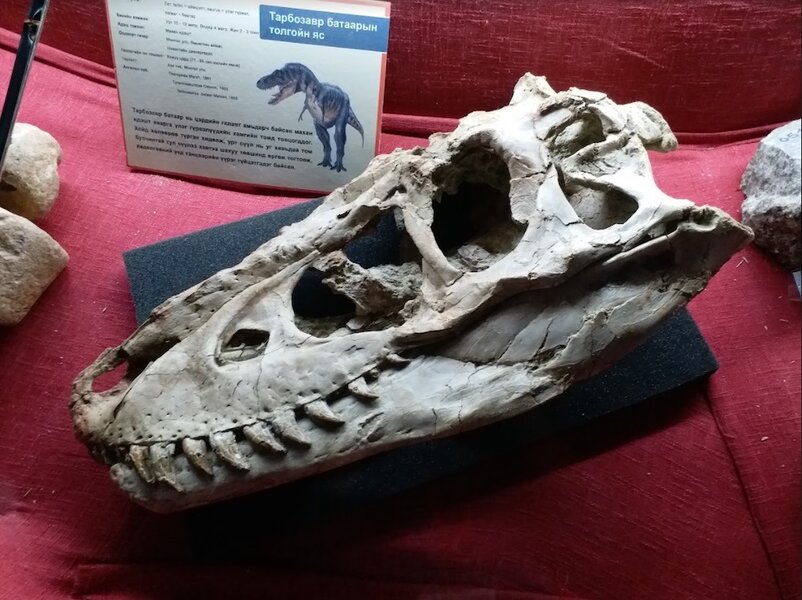Create a free profile to get unlimited access to exclusive videos, sweepstakes, and more!
Jaws of steel: Dinosaur bites grew more vicious over time
It wasn't easy in those Jurassic environs, but having a strong bite helped.

Dinosaurs ruled the earth for millions of years before humans showed up, and during that time the world changed over and again. Prey and predator relationships shifted, and plants evolved to combat being eaten. Holding reign over a planet for as long as they did required an ability to change with the times –– to become better, faster, stronger.
A new study by Fion Waisum Ma and colleagues from the School of Geography, Earth and Environmental Sciences at the University of Birmingham illustrates one way dinosaurs kept up with the changes. Their findings, published in the journal Current Biology, show that as time pressed on, dinosaur jaws grew in strength.
“We studied more than 40 lower jaws from five different theropod groups including tyrannosauroids, dromaesaurids, oviraptorosaurs, therizinosaurs, and ornithomimosaurs,” Ma told SYFY WIRE. “All five study groups showed jaw strengthening as they evolved through time.”
While jaw strengthening appears to be a universal evolutionary push over time, the ways in which different dinosaur groups accomplished the strengthening varied. Herbivores, in general, developed a downturned jaw, while carnivore jaws became upturned. Despite the opposing strategies, each case resulted in a jaw that was better at dissipating stress and reducing the likelihood of bone fracture. Moreover, it allowed dinosaurs to increase the range of foods they could consume.
Contrary to what might be the instinctual assumption, the animals with the strongest observed jaws were among the herbivores in the study groups. Against all common sense, if you must be bitten by a dinosaur, you’d do well to stay away from the plant eaters.
“Based on our feeding simulations, herbivorous theropods have a more stress-resistant jaw than the carnivores, in general, if scaled to the same size,” Ma said.
Scientists believe the driving force of these changes was competition for food resources. As populations grew or nutrient sources changed, dinosaur species had an incentive to build the strongest jaws they could muster.
Likewise, the difference in jaw evolution strategies is likely a result of the differing challenges related to acquiring plants versus meat. While the act of taking down another dinosaur for eating is violent and dangerous, fibrous plant materials put more strain on the jaw overall. As a result, herbivores developed jaws with incredibly strong bites capable of distributing force.
In contrast, while carnivores might benefit from these same adaptations, they also require speed in their bite, something with appears to have a give-and-take relationship with strength. Carnivores seem to have prioritized speed over strength.
To make their conclusions, the team generated virtual models of lower jaws and produced feeding simulations to better understand the biomechanics at work in different species while eating different food types.
“We reconstructed how the robustness of jaws changed over time by plotting all the data on an evolutionary tree that included all the study species,” Ma said. “This allowed us to visualize the evolutionary trend of jaw strength along the vie study groups and show they were becoming stronger.”
These findings, while interesting all on their own, might also provide some insight into the overall evolution of certain dinosaur groups over longer timeframes. That’s something researchers intend to continue studying in hopes that these sorts of feeding simulations might shine a light on how species adapt and evolve.
“Theropod dinosaurs experienced one of the most extreme dietary changes in vertebrate evolutionary history,” Ma said. “They first started as carnivores and then evolved into more specialized carnivores, herbivores, and omnivores.”
In future studies, the team hopes to add additional dinosaur species which weren’t included in this work to map out the feeding mechanics and dietary changes present in a more general population.
There’s no good evidence to suggest that dinosaurs barked — Fred Flintstone’s pet Dino aside — but biting was something they were very good at, and they were getting better all the time.



























